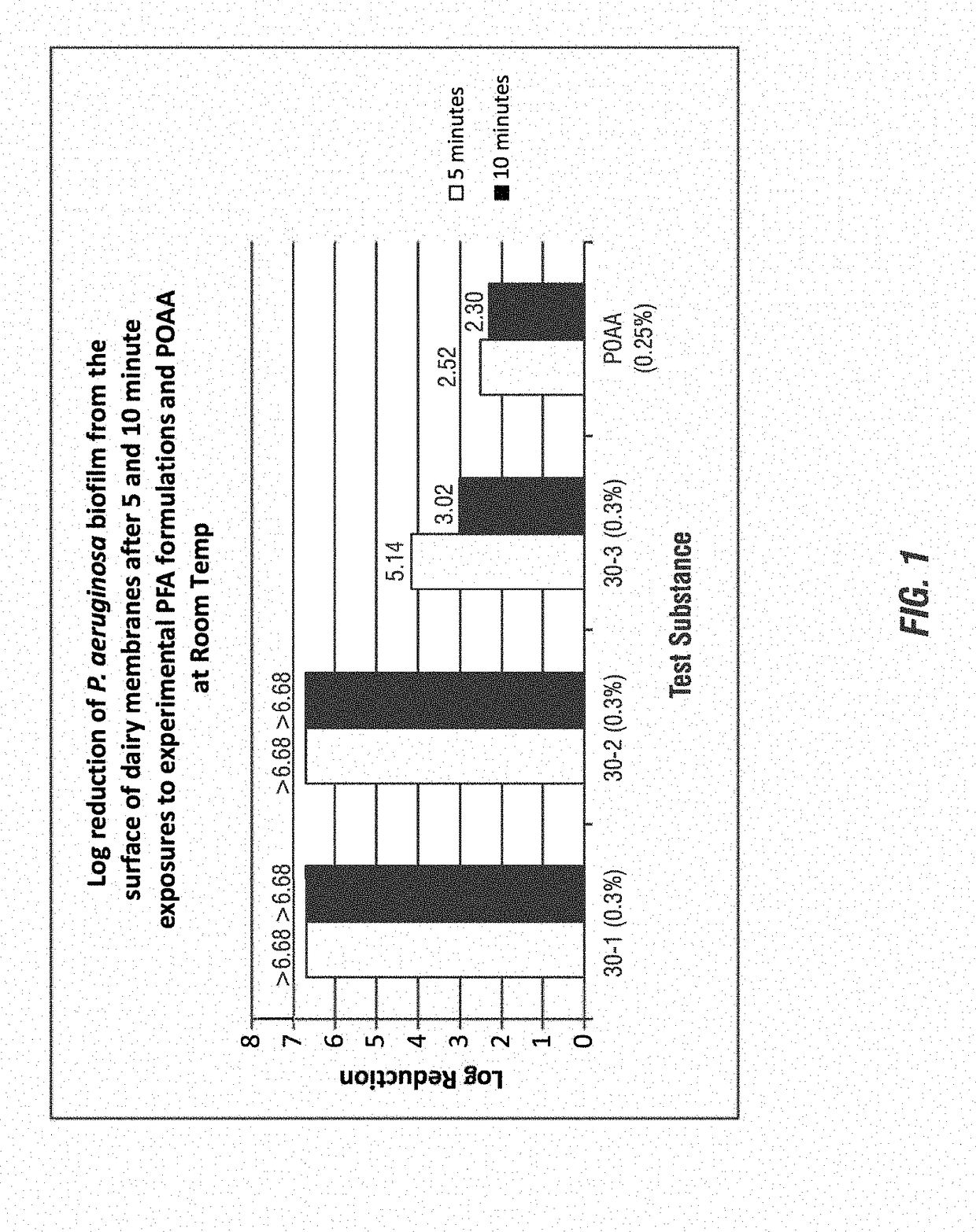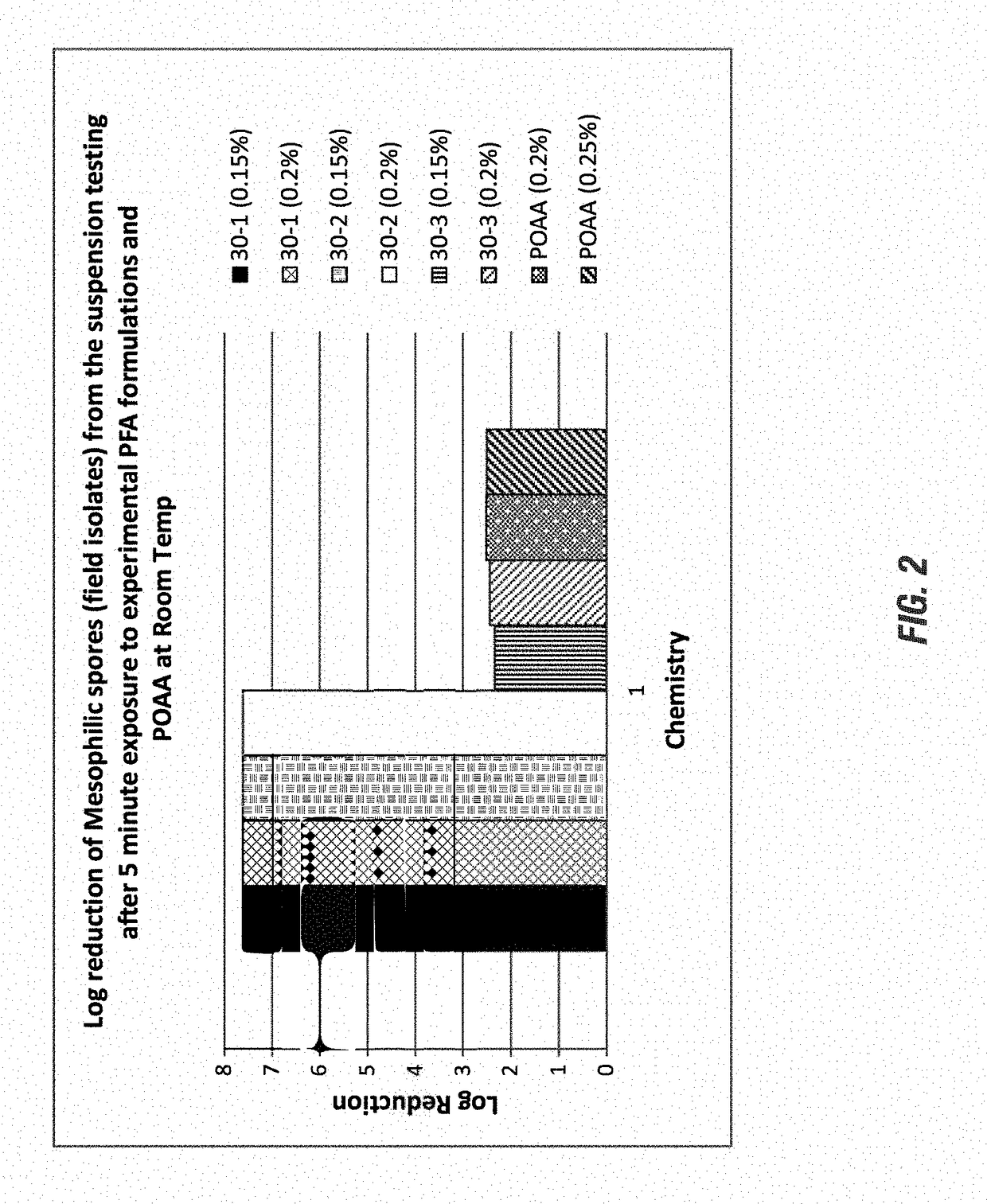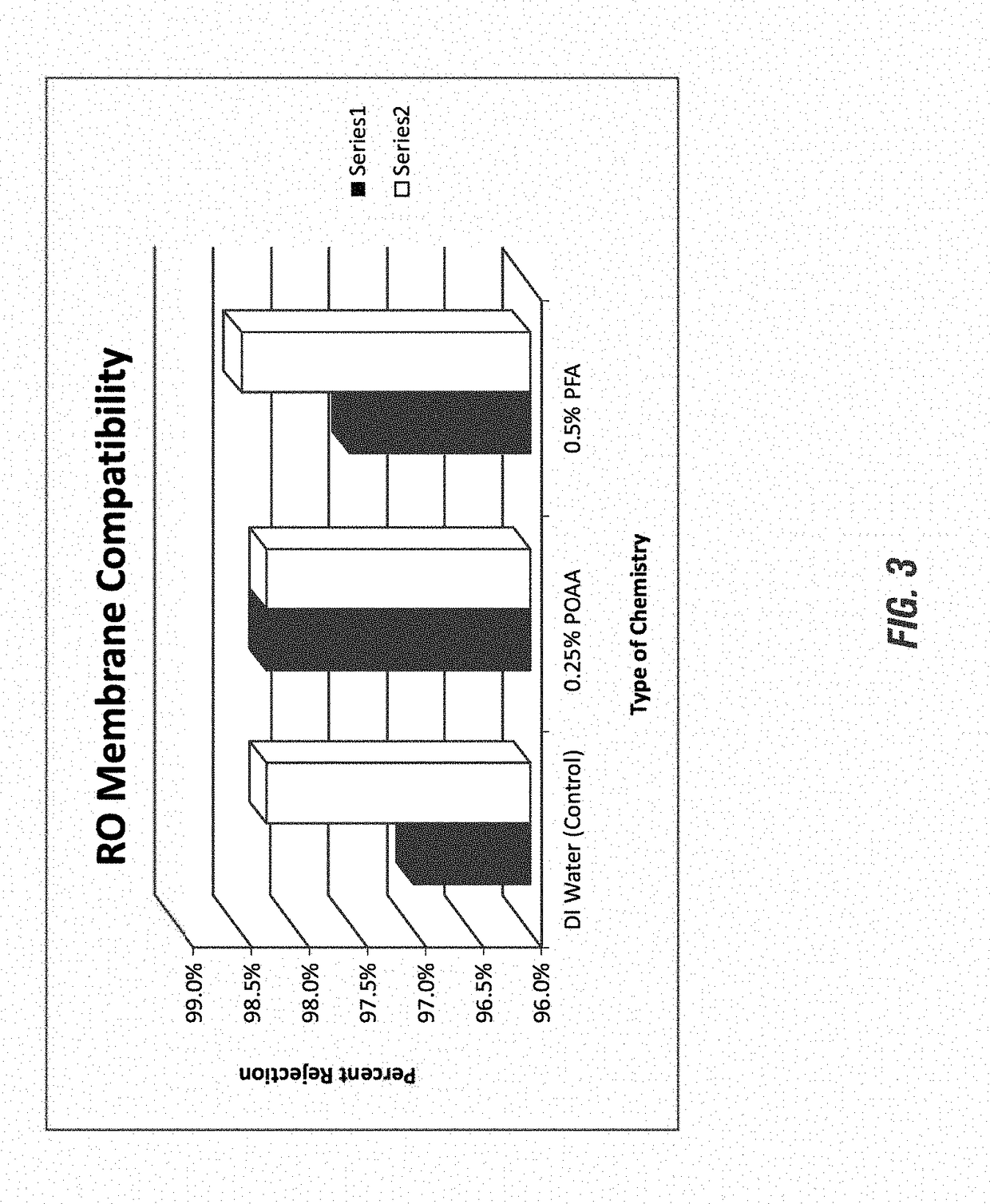Peroxyformic acid compositions for membrane filtration cleaning in energy services
a technology of peroxyformic acid compositions and energy services, applied in the direction of chemicals, specific water treatment objectives, diseases, etc., can solve the problems of biofilm growth and mineral deposits on membranes, membranes gradually being fouled, ultrafiltration membranes, etc., and achieve the effect of reducing biofilm growth and mineral deposits
- Summary
- Abstract
- Description
- Claims
- Application Information
AI Technical Summary
Benefits of technology
Problems solved by technology
Method used
Image
Examples
example 1
[0146]The removal of biofilm was tested to determine efficacy of biofilm removal and kill rates of Pseudomonas aeruginosa. Pseudomonas are well-known as common ‘pioneer’ bacteria and often tested for biofilm-inhibiting agents' effectiveness. The bacteria are known to excrete polysaccharides and generate biofilm on a variety of surfaces very rapidly (including, for example, membrane filtration elements), as well as commonly demonstrate resistance to various antimicrobial compositions. However, bacteria that exist in a biofilm are phenotypically different from suspended cells of the same genotype; therefore the study of biofilm in the laboratory requires protocols that account for this difference. Laboratory biofilms are engineered in growth reactors designed to produce a specific biofilm type. Altering system parameters correspondingly results in a change in the biofilm.
[0147]Pseudomonas aeruginosa (ATCC 700888) was the organism used. An isolated colony was aseptically removed from a...
example 2
[0152]In addition to biofilm disruption during membrane filtration, mineral scale also serves as a significant hindrance which reduces output and decreases the life of the membrane filtration elements. Mitigation of mineral buildup was tested to determine efficacy of the exemplary compositions to solubilize excess minerals.
[0153]For these experiments, compositions 30-1 (0.3%), 30-2 (0.3%), and 30-3 (0.3%) were prepared to be tested. Product dilutions were made in DI water and the initial pH of the solution was recorded. The test dilutions are then added to a beaker and stirred at 25° C. Excess amounts of calcium mineral (either phosphate or carbonate solids) were added until the solution was opaque and the amount of mineral added is recorded. The excess mineral is allowed to settle for about 5 minutes and a final pH of the acidic solutions are recorded. The solutions are then filtered and standard ICP-MS methods are used to determine calcium and phosphorus solubility capacity in the...
example 3
[0155]It is important that any possible formula used for membrane filtration cleaning be compatible with the membranes and not impact membrane function. To determine the membrane compatibility formula 30-1 (0.5%) was compared to POAA and DI water was used as a negative control.
[0156]Membranes are initially rinsed with DI water to remove residual storage buffer and are placed in a 1 gallon jar. The test solutions are added to the 1 gallon jar and placed in an oven at 50° C. for 24 hours. After 24 hours, the test solution is removed and replaced with fresh test solution. The jar is placed back in an oven for 24 hours and this same protocol is repeated 2 more times for a total of 4 days. Based Tables 3A and 3B below 4 days is equivalent to 1.5 years of exposure for daily membrane cleanings.
TABLE 3ADaily ApplicationWash Time10MinWashes / Week7WashesWeeks / Year52WeeksExposure Time / Year3640min / year1.5YearsTotal Exposure5460MinutesTotal Exposure91HoursTotal Exposure3.791667Days
TABLE 3BWeekly ...
PUM
| Property | Measurement | Unit |
|---|---|---|
| temperature | aaaaa | aaaaa |
| temperature | aaaaa | aaaaa |
| diameters | aaaaa | aaaaa |
Abstract
Description
Claims
Application Information
 Login to View More
Login to View More - R&D
- Intellectual Property
- Life Sciences
- Materials
- Tech Scout
- Unparalleled Data Quality
- Higher Quality Content
- 60% Fewer Hallucinations
Browse by: Latest US Patents, China's latest patents, Technical Efficacy Thesaurus, Application Domain, Technology Topic, Popular Technical Reports.
© 2025 PatSnap. All rights reserved.Legal|Privacy policy|Modern Slavery Act Transparency Statement|Sitemap|About US| Contact US: help@patsnap.com



